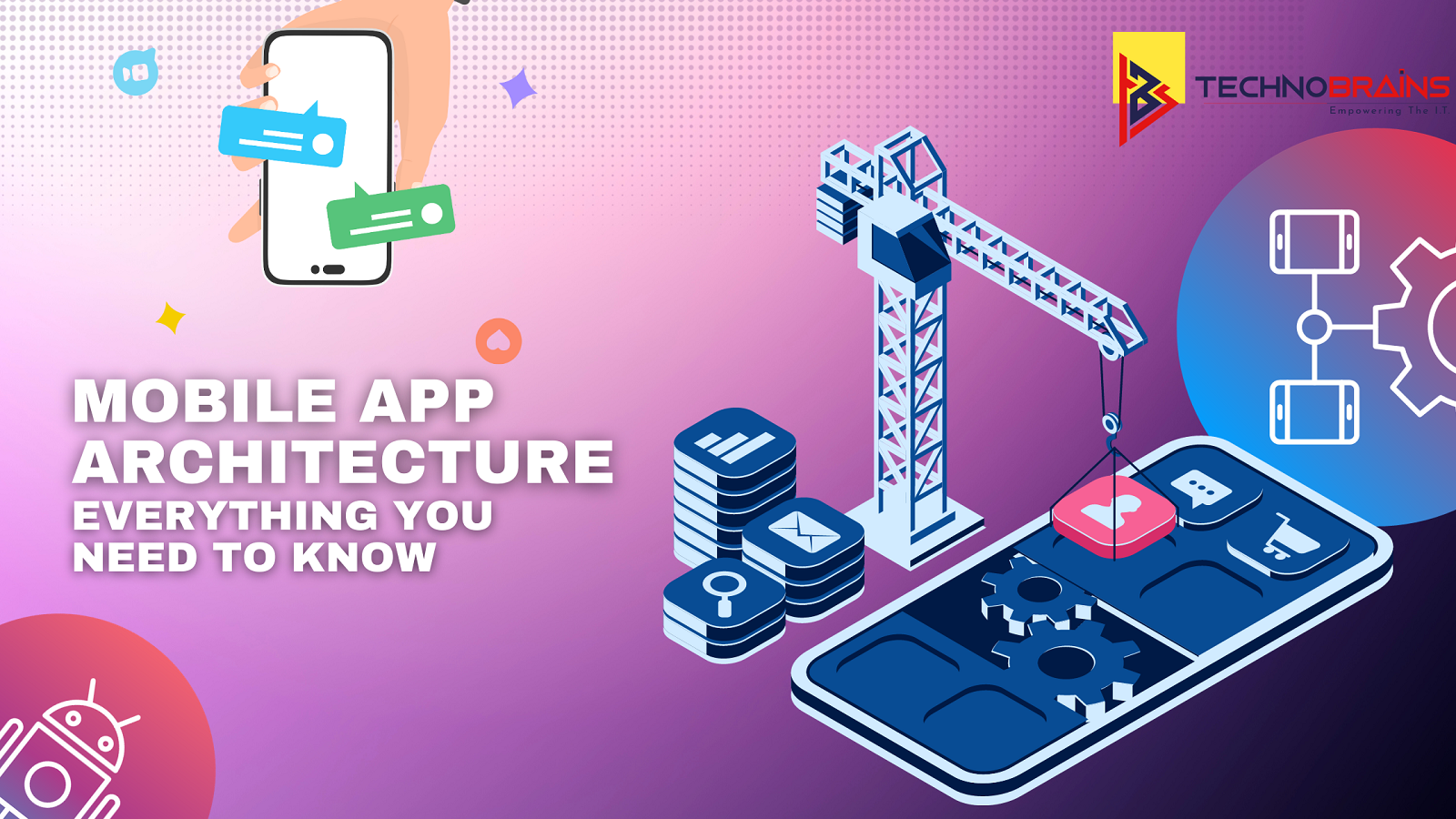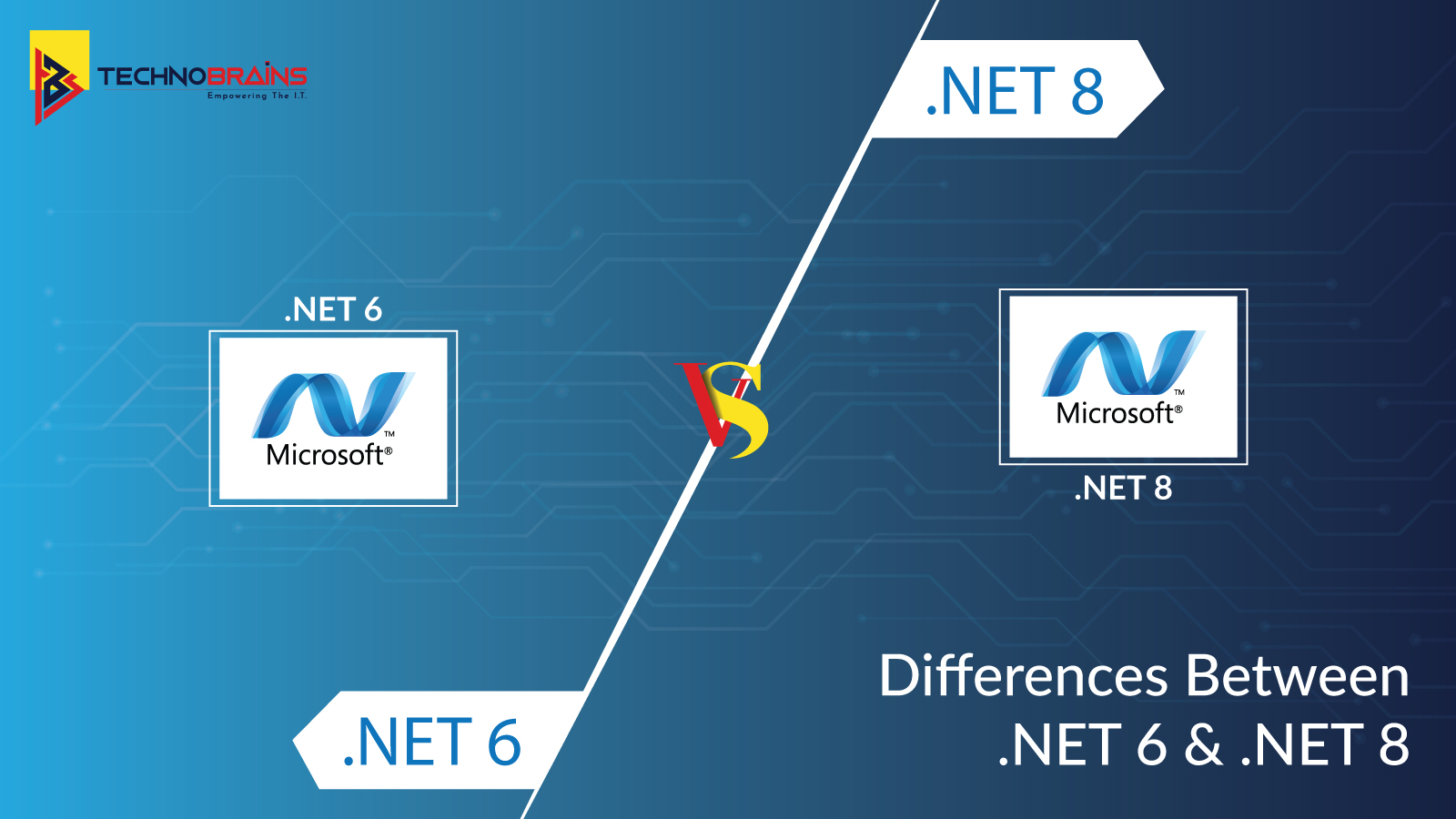Did you know that as of June 5, 2023, there are 3,791,525 apps available on Google Play and 1,762,112 apps on the Apple App Store?
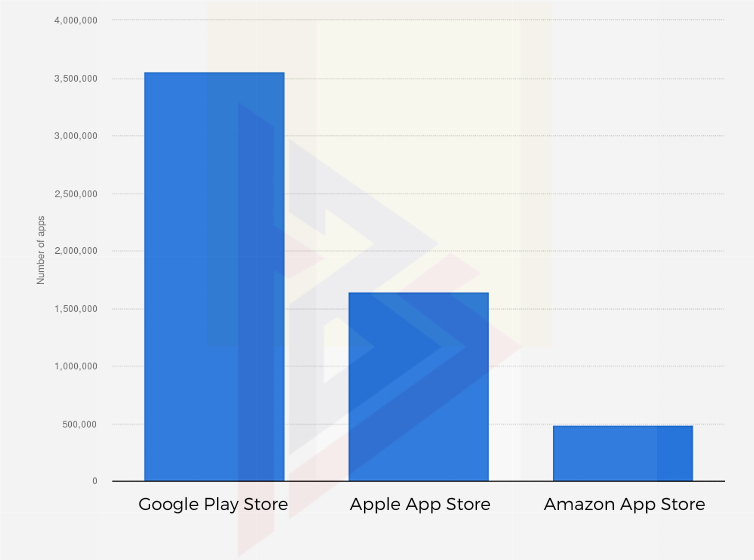
This staggering figure underscores the vital role of mobile app architecture. It is a key component in mobile app development that is often overlooked yet pivotal in determining an app’s success or failure.
Besides this, Statista’s projections indicate a significant rise in global mobile app revenue, anticipating it to reach approximately 613 billion U.S. dollars by 2025, highlighting the growing financial potential of the mobile app market.

Whether you’re in an industry with specific needs, a non-tech-savvy decision-maker, or at the helm of a startup or small business, understanding the ins and outs of mobile app development architecture is crucial.
From Android to iOS, this isn’t just about coding; it’s about crafting digital experiences. Let’s get started!
Understanding Mobile App Development Architecture
Mobile app architecture is the structural framework that dictates the organization, design, and overall functionality of a mobile application. It is like the blueprint of a building; it’s the underlying structure that holds everything together.
Imagine you’re using a ride-sharing app. The app’s architecture determines how quickly it responds, how well it handles multiple user requests, and even how it scales during peak hours. If the architecture is well-designed, the app performs smoothly, scales efficiently, and remains stable under heavy use.
For instance, a poorly structured app might crash or slow down when too many users book rides simultaneously, whereas a well-architected app would handle this surge seamlessly. Moreover, this architecture directly impacts the user experience.
Also Read, Mobile App Development Trends This Year.
Take Instagram as an example
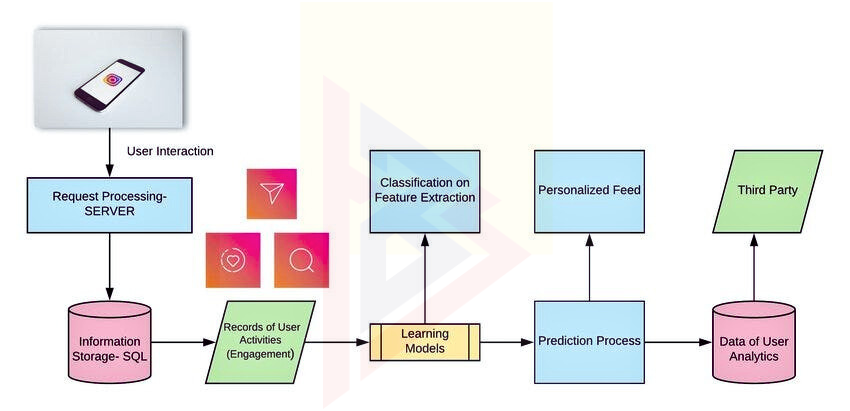
Its architecture ensures that millions can upload photos, scroll feeds, and interact without lag, offering a seamless, enjoyable user experience. Thus, mobile app architecture is not just about technical foundations; it’s about crafting an experience that is both reliable and enjoyable for the end-user.
Key Principles of Good App Architecture

The principles of good app architecture stand as the pillars of successful applications. Each principle shapes not only the app’s quality but also its market longevity and user satisfaction.
Sustainability
Sustainable apps focus on efficient resource use and minimal environmental impact. They use strategies like content delivery networks to reduce data usage and energy consumption, ensuring longevity and adaptability in the ever-evolving digital landscape.
Maintainability & Manageability
Clean, well-organized code underpins maintainable apps. This approach simplifies updates, bug fixes, and enhancements, thereby reducing development time and costs while increasing the app’s lifespan and reliability.
Reusability
By utilizing modular components, app architecture can significantly cut down development time. Reusability promotes consistency, reduces errors, and makes maintenance easier, ultimately speeding up the deployment of new features and updates.
Security
Robust app architecture prioritizes data security and user authentication. It employs techniques like encryption and biometric verification to protect sensitive user information, ensuring trust and compliance with data protection regulations.
Performance
Good architecture is designed to deliver optimal performance across various user contexts and device capabilities. It prioritizes simplicity and user context optimization, ensuring smooth, responsive, and efficient app functioning, regardless of device specifications or network conditions.
Core Layers in Mobile App Architecture

The core layers of mobile app architecture serve as the fundamental building blocks. Each layer, distinct in function and purpose, plays a crucial role in shaping the app’s functionality and user experience.
Presentation Layer
This is the app’s face, where user interface and interaction design come into play. It’s what users see and interact with – the layout, buttons, colors, and graphics. For example, in a weather app, the presentation layer is the sleek, intuitive interface showing temperature and forecasts, designed for easy navigation and aesthetic appeal.
Business Layer
Here lies the app’s brain, handling data and logic processing. It’s responsible for the app’s operational logic and rules, like calculating costs in a shopping app or processing user inputs in a fitness tracker. This layer ensures that the app behaves as expected, processing data and executing commands based on user interactions.
Data Layer
The backbone of the app, the data layer, manages data storage, retrieval, and overall data management. Think of a music streaming app where this layer handles the storage of song files, user preferences, and playlists. It ensures that data is securely stored and efficiently retrieved, allowing for smooth streaming and personalized user experiences.
Exploring Different App Architectures
In 2023, 87% of developers are creating apps for Android and 58% for iOS. In such a dynamic environment, the choice of app architecture plays a pivotal role in the app’s overall success and functionality.
Android App Architecture
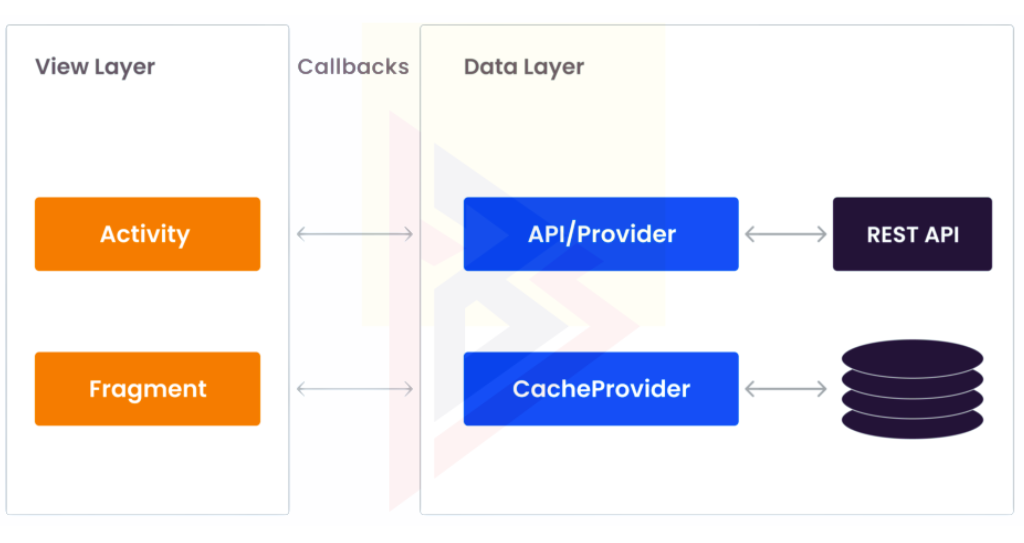
Architecture in Android app development is a versatile environment that offers a variety of options and technologies to developers. A common choice is the Clean Architecture, focusing on the separation of concerns for improved maintainability.
For example, a social media app on Android might leverage this architecture to efficiently manage data, user interactions, and network operations, ensuring a smooth user experience despite the complexity of its functionalities.
iOS App Architecture

Apple promotes the Model-View-Controller (MVC) pattern for iOS apps, advocating for a clear separation of the app’s data processing and user interface.
Consider an iOS-based e-commerce app: utilizing MVC, it separates the data handling (Model), the user interface (View), and the interaction between these components (Controller). This structured approach aids in creating organized, efficient apps that align with Apple’s standards and provide a seamless user experience.
Cross-Platform App Architecture

This architecture, favored by over 50% of developers, enables the creation of apps for both Android and iOS from a single codebase using frameworks like Flutter and React Native.
A noteworthy example is a messaging app that maintains consistent functionality and aesthetics across both platforms, significantly reducing development time and resources while ensuring a native-like experience on each platform.
You might also like to read, Reasons to Develop Your Next Mobile App in Flutter.
Hybrid vs. Native Mobile App Architecture

Hybrid apps blend web technologies with native execution, offering a balance of development efficiency and platform integration. Conversely, native apps are developed specifically for a platform, providing optimal performance and user experience.
For instance, a high-performance gaming app might opt for native architecture to fully utilize device-specific hardware. In contrast, a content-focused news app could benefit from the hybrid approach for quicker development across multiple platforms.
Choosing the Right Architecture for Your Application

Platform Support, App Type, and User Needs
The choice of mobile app architecture hinges on the platforms you aim to support – whether it’s iOS, Android, or both. Each platform has its unique architecture guidelines and best practices.
Additionally, the type of app you’re developing – be it a gaming app, a business tool, or a social media platform – influences this decision. Your architecture must cater to specific user needs and the functional requirements of the app.
For example, a data-heavy enterprise app might require a robust back-end architecture, while a simple content delivery app could benefit from a more lightweight structure.
Importance of Testing and Enhancing Core Functions
Thorough testing is critical to ensure that your app functions seamlessly across different devices and operating systems. It helps identify potential issues in the architecture, such as load handling, data synchronization, or user interface glitches.
Regular enhancement of the app’s core functions is necessary to keep up with evolving user needs and technological advancements. This includes optimizing the code, updating features, and ensuring that the app remains secure and efficient in its operations.
Assessing the Development Team’s Readiness
The skills and expertise of your development team are vital in choosing the right architecture. A team skilled in a particular platform or framework can more effectively leverage its features and capabilities.
Assessing your team’s readiness involves understanding their proficiency with the proposed architecture, their experience with similar projects, and their ability to adapt to new technologies. If your team is more experienced in a certain type of architecture, it might be beneficial to choose that path for a smoother development process.
Budget Considerations and Cost-Effective Development Strategies
Budget is a critical factor in determining the app architecture. A balance must be struck between the cost of development and the desired quality and features of the app.
Strategies for cost-effective development include using open-source frameworks, which can reduce licensing costs, and opting for cross-platform development tools to build apps for multiple platforms simultaneously.
This approach can significantly reduce development time and resources. However, it’s important to ensure that these cost-saving measures don’t compromise the app’s performance, security, and user experience.
Also get to know about, The Cost of Developing a Mobile App.
Final Thoughts: How TechnoBrains Can Guide Your Success
Understanding mobile app architecture is crucial in today’s tech-driven world, where millions of apps compete for user attention.
However, the key relies solely on choosing the right architecture requires careful consideration of factors like platform support, app type, user needs, team readiness, and budget. Remember, the architecture you choose can significantly impact your app’s functionality and user satisfaction.
TechnoBrains Business Solutions, with its extensive experience and skilled team, stands out as a formidable ally in this domain. Specializing in custom mobile app development, android application development, and iOS development, they excel in creating tailored solutions that align with specific business needs and technological trends.
